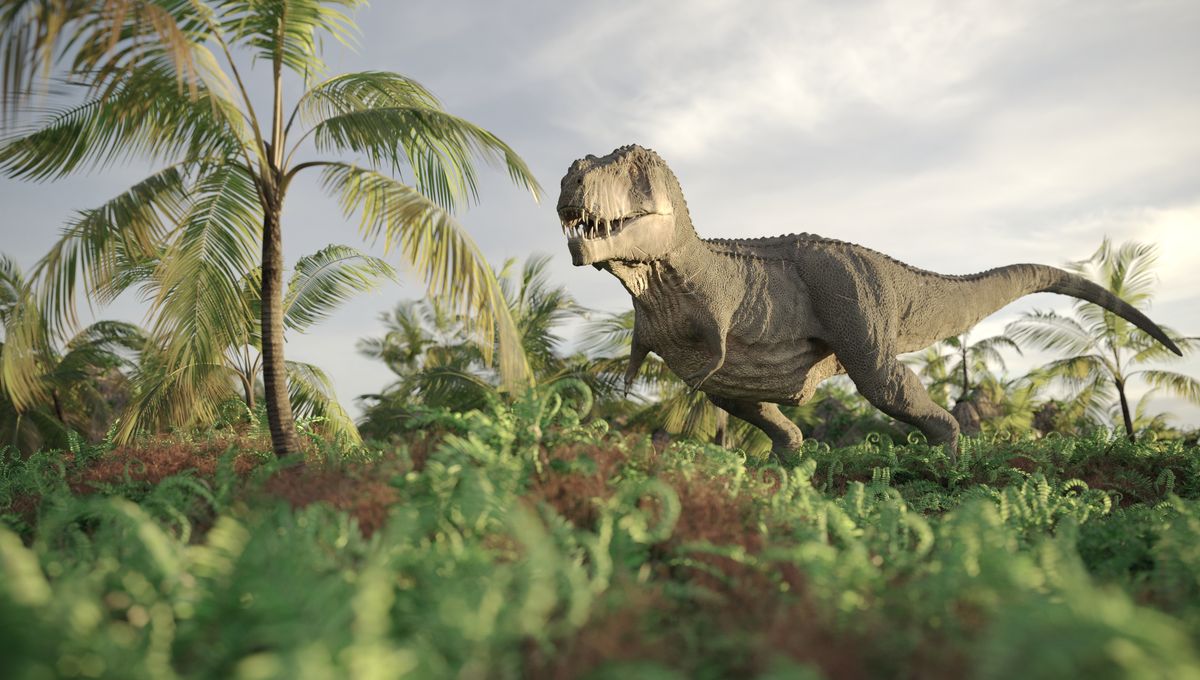
Grass is a relatively new addition to planet Earth. For most of the “Age of the Dinosaurs”, sprawling green pastures simply didn’t exist. The likes of Stegosaurus, Allosaurus, and their other dinosaur buddies from the Triassic and Jurassic probably never had the pleasure of setting foot on grass. However, pinning down the exact origin of grass is anything but straightforward.
The oldest undisputed fossils of grass (scientifically known as Poaceae) date to 56 million years ago. That’s 10 million years after the infamous asteroid impact caused the mass dinosaur extinction 66 million years ago. It’s also around 414 million years after plants as a whole first emerged on land during the Middle Ordovician, around 470 million years ago.
For a long time, most scientists agreed that this date of 56 million years ago marked the emergence of all grass in the world. We could, therefore, say with some certainty that dinosaurs and grass never co-existed. However, several recent discoveries are starting to muddy the waters and suggest grass has been around for much longer.
In 2005, scientists discovered fozzilied remains of prehistoric poop that strongly suggested dinosaurs were eating grass. The samples, unearthed from the volcanic Deccan Traps of central India, are dated to around 65 million years old and push back the age of grass by 9 million years, back into the domain of the dinosaurs.
“It was very unexpected,” Caroline Strömberg, a palaeobotanist at the Swedish Museum of Natural History, told Nature in 2005.
“We will have to rewrite our understanding of its [grass] evolution. We may have to add grass to the dioramas of dinosaurs we see in museums,” noted Strömberg.
Furthermore, the research showed that dinosaurs were actively grazing on at least five taxa of grass that are still in existence, suggesting that this humble lifeform had been around long enough to significantly diversify.
More recently, even older evidence has emerged. A 2017 study by Chinese palaeontologists found fragments of grass-like epidermis and phytoliths on the teeth of a hadrosaur (duck-billed dinosaur) that dated to up to 113 million years ago.
Considering that dinosaurs first appeared during the Triassic Period, starting around 245 million years ago, that still leaves roughly 130 million years of dinosaur history taking place in a grassless world.
And while the Chinese discovery pushed back the timeline for the appearance of grass, it doesn’t mean the entire prehistoric world was blanketed in tiny green blades. Most scientists agree that early grasses were sparse and far from dominant. Today, grasslands stretch across ~40 percent of Earth’s land surface, not counting the frozen expanses of Greenland and Antarctica.
In contrast, during the age of the dinosaurs, such sweeping grasslands likely didn’t exist – and that’s a vital detail when we try to imagine their world.
Speaking to IFLScience in a recent video interview, palaeoartist and producer Jay Balamurugan explained that the absence of grasslands was a major difficulty when working on the latest BBC series of Walking With Dinosaurs.
“It was quite a lot of effort. We first had to figure out, okay, what sort of plants were around. Obviously, grass hadn’t evolved yet, or at least they were only just starting to really get going. Basically, a lot of the plants we know today weren’t around,” Balamurugan said.
“Some of these landscapes, I think, we got fairly close to what it would have been like. We’re never going to be perfect. Those landscapes simply don’t exist anymore,” she added.
The lack of grasslands also has big implications for how we reconstruct the behavior of these animals. Furthermore, it’s something we should seriously think about if we were ever to consider bringing these creatures back from the depths of extinction, à la Jurassic Park.
“Grass hadn’t evolved when the dinosaurs were around, so the herbivores weren’t eating grass. Grass is quite difficult to eat, it has lots of bits of almost glass-like material in it, which causes your teeth to wear down really fast,” Dr Susie Maidment, dinosaur researcher at London’s Natural History Museum, told IFLScience in 2023.
“Things like horses have evolved these very high Crown teeth, which wear down over time. Dinosaurs didn’t have that. They replaced their teeth continuously throughout their lives, but if they were eating grass, could they have digested grass? Could their teeth replacement rate keep up with being worn away?” she added.
Source Link: Grass Is Relatively New On Planet Earth, And That Has Some Wild Implications